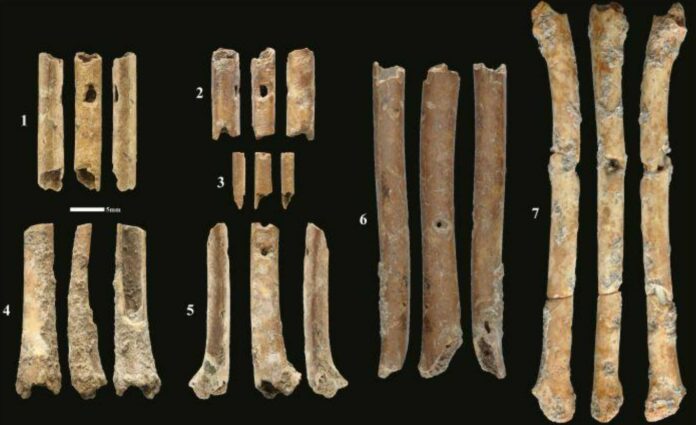Breath of the Ancients: 12,000-year-old Wind Instruments that May Have Been Used for Hunting Unearthed in Eynan-Mallaha for the First Time
Made from small waterfowl bones and producing bird-like sounds, the first wind instruments of the Levant discovered at Eynan-Mallaha open up a new understanding of the Natufian civilization’s musical, hunting, and symbolic practices.
A melodious find! Unearthed in the ancient village of Eynan-Mallaha, the first prehistoric wind instruments of the Near East tell a tale of early music, hunting techniques, and symbolic practices of the Natufian civilization.
Despite extensive archaeological investigations since 1955, the prehistoric site of Eynan-Mallaha in northern Israel continues to surprise scientists with its discoveries. A recent publication in Nature Scientific Reports highlights the remarkable findings of a Franco-Israeli team, who have identified seven ancient wind instruments, commonly referred to as flutes, at the site.
These flutes, dating back 12,000 years, are an extraordinary rarity in the Near East, representing the first of their kind to be unearthed in this region.
Crafted from the bones of a small waterfowl, these unique aerophones emit sounds akin to certain birds of prey, such as the Eurasian sparrowhawk and common kestrel, when air is blown through them. The choice of using specific bones to create these instruments was a deliberate one.
Although larger bird bones capable of producing deeper sounds were available, the Natufians, the ancient civilization that inhabited this village from 13,000 to 9,700 BC, purposefully selected smaller bones to achieve the desired high-pitched tones, mirroring the vocalizations of these particular raptors. The intended purpose of these instruments remains speculative, with potential applications ranging from hunting and music to communication with the birds themselves.
The archaeological record at Eynan-Mallaha provides further evidence of the Natufians’ special reverence for avian creatures. The discovery of numerous talon ornaments at the site attests to the symbolic significance attributed to birds by this ancient culture.
Situated on the shores of Lake Hula, the village of Eynan-Mallaha served as the dwelling place for the Natufians over a span of 3,000 years. Unveiling the practices and lifestyles of a civilization caught between nomadic and settled ways of life, as well as the transition from a hunting-based economy to agriculture, this settlement assumes paramount importance.

The research, supported by the Fyssen Foundation and the Ministry of Foreign Affairs, sheds new light on the musical and cultural heritage of the Natufians, while also contributing to our understanding of human development in this pivotal era.
By unearthing these ancient flutes, archaeologists have opened a window into the past, revealing the rich tapestry of human ingenuity and artistic expression that existed over 12,000 years ago.
Source: 10.1038/s41598-023-35700-9
Image Credit: Laurent Davin
